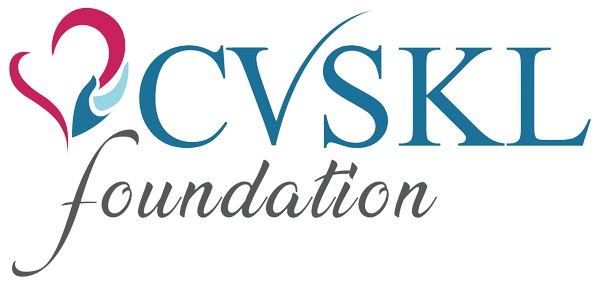Your heart is divided into 4 chambers. The 2 upper chambers are called the left and right ventricles. With each beat of your heart, blood is pumped to and from other parts of the body. The pumping is controlled by your hearts’ electrical system. When resting, a normal adult heart usually beats 60-120 times per minute.
Atrial Fibrillation (AF) is an irregular heart rhythm condition that affects the upper chambers (atria) of the heart. This arrhythmia prevents blood from being pumped efficiently to the rest of your body. AF itself is not life-threatening but it can lead to stroke and heart failure so it has potentially serious side effects.
When AF occurs, disorganized electrical signals cause the atria to quiver rapidly and irregularly, instead of beating in a regular rhythm. Because the heart chambers are not working together properly, this can reduce the heart’s ability to pump blood efficientlyto the rest of the body.
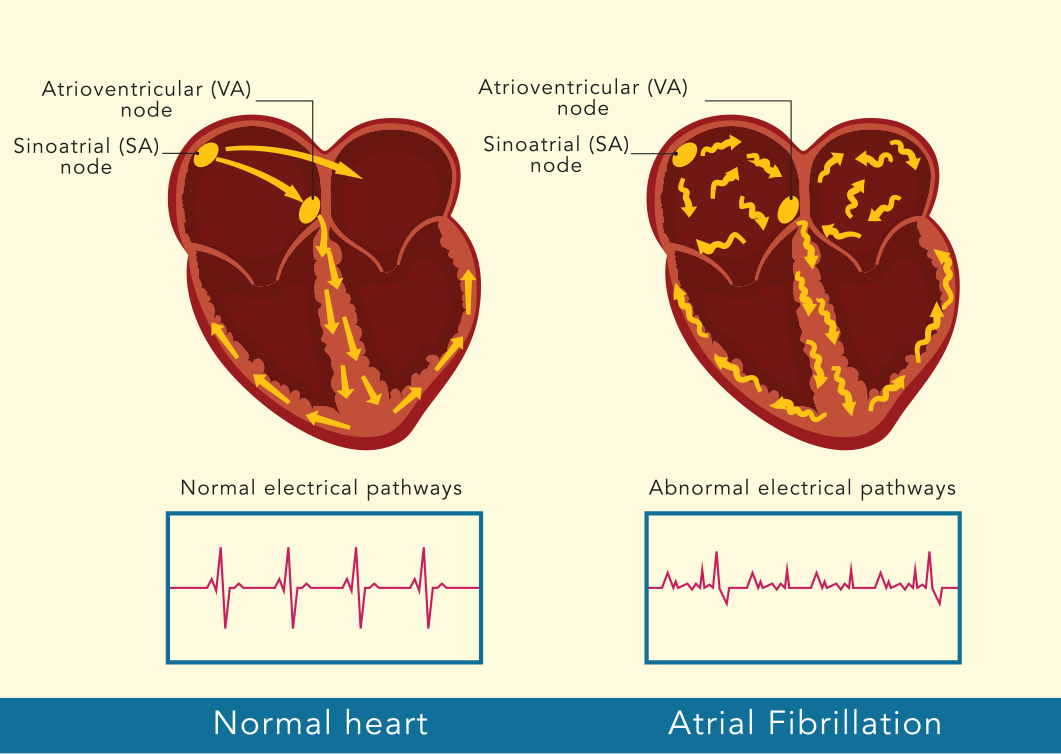
Symptoms may vary depending on the severity of your case, its causes and your overall health. You may notice:
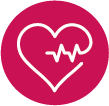
Irregular, Rapid, Fluttering or Pounding Heartbeat
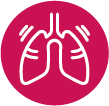
Chest Discomfort or Pain
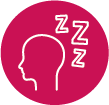
Fatigue, Shortness of Breath or Weakness
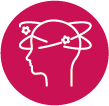
Dizziness
The causes of AF are often unclear. AF may be caused by:
- Heart abnormality from birth
- Damage to the heart structure from a heart attack
- Heart valve problems
People with otherwise normal healthy hearts may also develop AF.

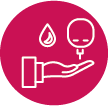
High Cholesterol
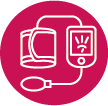
High Blood Pressure
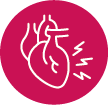
Heart Disease / Disorder

Smoking
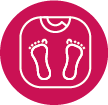
Overweight / Obesity

Caffeine

Alcohol Abuse
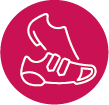
Lack of Physical Activity
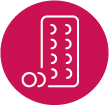
Some Medications
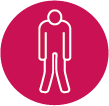
Sleep Apnea
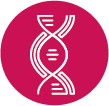
Family History
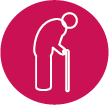
Advanced Age
Medication such as calcium channel blockers and beta blockers can be used to help slow the conduction of electrical impulses to maintain a slower heart rate:
- Rate control: helps lower heart rate and regulate the pace of electrical currents
- Rhythm control: helps to keep heartbeat and rhythm patterns normal
- Anticoagulants (“blood thinners”): to reduce the risk of blood clot formation that can lead to stroke or to treat an existing blood clot
Cardioversion is a medical procedure that restores a normal heart rhythm in people with certain types of abnormal heartbeats (arrhythmias). It is usually done by sending electric shocks to your heart through electrodes placed on your chest. It’s also possible to do cardioversion with medications.
Ablation is a procedure using either heat (radiofrequency ablation) or freezing (cryoblation) on the area of your heart that’s causing the abnormal heart rhythm (for arrhythmia). This treatment creates scar tissue which breaks abnormal circuits in the heart and destroys areas of the heart muscle which are triggering arrhythmia.
When blood is not pumped properly out of the heart, it may pool in the left atrial appendage and form a clot. If you are at risk for stroke and need to take oral anticoagulants but are either unable or unwilling (because of the associated high risks), LAAC is an implant designed to keep harmful blood clots from entering the bloodstream by occluding the LAA. Be sure that you thoroughly understand the risks and benefits associated.
Stroke. You are 5 times more likely to develop a stroke than someone who doesn’t have AF. Blood may not be properly pumped out of the heart which may cause it to pool and form a clot. This clot can then travel to the brain and block the flow of blood to part of the brain which can result in stroke.
You also have a risk of eventual heart failure due to weakening of the heart muscle.
AF can be treated or lessened with proper medications and procedures. AF, regardless of a duration, needs to be monitored by a physician.
AF can be a serious medical condition that should be treated no matter what level of symptoms you experience. Without effective treatment, AF may lead to stroke, heart failure and other health complications.
People can live long and healthy lives with AF. Controlling your risk factors for heart disease and stroke and knowing what possibly trigger your AF will help improve your long-term management of AF. Your electrophysiologist can help you manage it for life.
